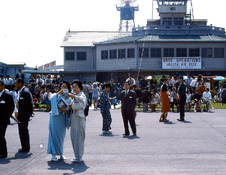I would love 220 for travel! Cinestill are in cahoots with EK, or have a special agreement at least for the remjetless manufacturing. IMO it's good they are filling the gap of Kodak branded chemistry as a distributor but their films are even more expensive than KA's own.
Oh boy, you got me started. I believe that 220 was a publicity stunt pure and simple, they never intended to make it. I have a pretty good idea of how much it would cost to make today (probably would have been similar or less when 400D launched), and to you and me it’s a lot but the crowdfunding would have covered making it, IIRC stretch goal was 25k more. I could be wrong about the stretch goal, but I’m not wrong about this.
$21,000. MOQ 10,000 rolls $2.1 each, plus shipping to/from Shanghai and whatever fees that entails, let’s call it $4000 to make the math simple. That’s how much confectioning 220 would have cost. And hey would you look at that, that’s $25K!
Let’s do some math. Assuming that 120 250D costs the same as 65mm, $4.09/roll
(It’s almost certainly around there if not lower if they are buying master rolls), 220 costs twice as much at $8.18/roll. Plus $2.5/roll for confectioning into 220 that’s $10.68/roll. They sold it for $30/roll. They would have made a 65% profit from each roll. They would have paid for confectioning the entire batch of 220 by selling 2,340 rolls. And I’m going off the confectioning cost because they were buying the film regardless, the film cost in this situation is moot.
And let’s not kid ourselves, they would have absolutely sold that much. Influencers would have peddled it, the people most likely to buy it are already shooting 220 capable cameras, and they have the money to buy the backs even if they go up in price. I mean look at Reflx, 220 is popular enough now that not only are they making it with Aerocolor but they’re making it with 250D abd 500T! They wouldn’t be doing that if people didn’t buy it, and they have just a fraction of the market and influence CineStill does!
TL;DR: 220 Cinestill is never happening because they never planned for it to happen.
Last edited:













